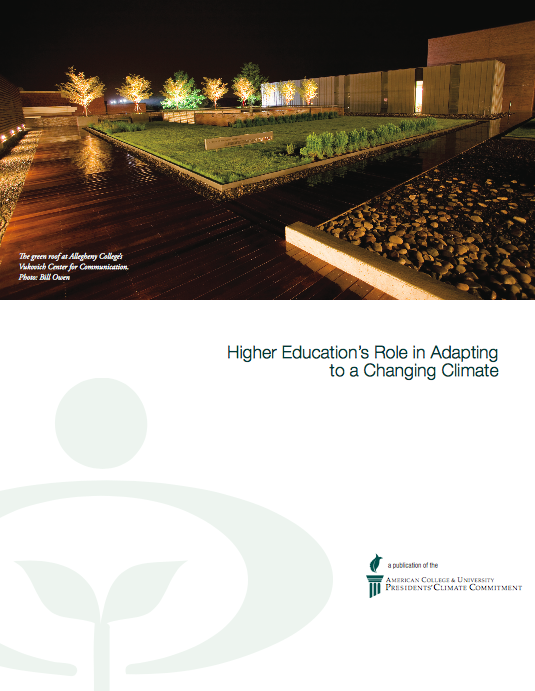Higher Education’s Role in Adapting to a Changing Climate

Posted by
Hannah RobinsonPublished
Abstract
From the Executive Summary:
Climate change poses serious threats to human civilization, yet it offers opportunities to create a better future. Colleges and universities face clear and growing risks from climate disruption, and it is critical that presidents, trustees and those with fiduciary responsibility for these institutions be aware of these risks. Addressing these risks can provide the opportunity to recreate institutions of higher education for the 21st century, equipping them to be safe and secure in the face of change, more actively engaged in solving real-world problems, and reorganized to better provide the education and research needed to create and maintain a sustainable society.
This report, prepared by the Higher Education Climate Adaptation Committee — a group of experts and institutional leaders convened and coordinated by Second Nature in support of the American College & University Presidents’ Climate Commitment (ACUPCC) — finds that higher education institutions:
- Have a critical role to play in preparing society to adapt to the impacts of climate disruption by providing research on adaptation strategies and science.
- Need to increase their curricular offerings on climate adaptation, both through mainstreaming the information in core courses and offering electives that specialize in the topic.
- Have the unique opportunity to role-model solutions in their own operations; and to work directly with their local communities in explaining the science and implementing solutions.
- Face direct risks to their operations and infrastructure from the impacts of climate disruption.
- Should work to identify adaptation strategies that also contribute to mitigation efforts.
- Can serve as ‘hubs’ in their local communities for creating, testing, and disseminating knowledge about adaptation strategies.
- As a whole, have not focused on adaptation sufficiently to date.
Higher education has taken a leadership role in climate mitigation — that is, preventing climate change by reducing greenhouse gas emissions. It now must take the lead in climate adaptation — that is, preparing for and responding to impacts of climate change.
Citation
Higher Education Climate Adaptation Committee. (2011). Higher education’s role in adapting to a changing climate. Retrieved from CAKE: http://www.cakex.org/virtual-library/higher-education%E2%80%99s-role-ad…
